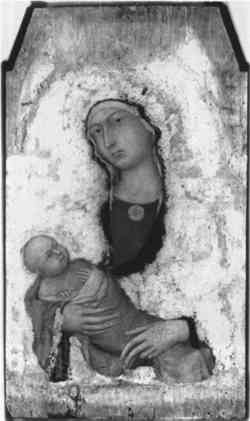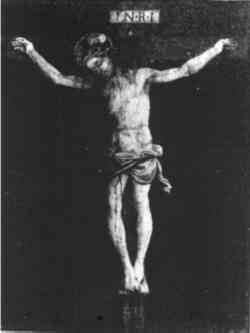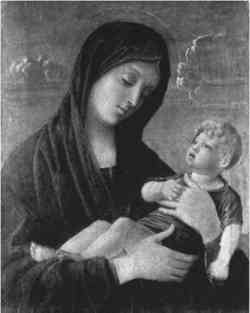THE RESTORATION OF THE EARLY ITALIAN “PRIMITIVES” DURING THE 20TH CENTURY: VALUING ART AND ITS CONSEQUENCESCATHLEEN HOENIGER
4 TREATMENTS AND ETHICS IN THE 1950s AND 1960sIn contrast, subsequent generations of restorers in Italy, and in North America as well, have typically avoided invisible restorations when paintings by the early Italian masters are concerned. One explanation for this shift from the polished aesthetic restoration carried out by Stefano Bardini in the late 19th century to the nonaesthetic harsh cleanings in the mid-20th century can be found in conservation ethics. No longer trained as painters and copyists, the new professional restorers of the 1950s and 1960s avoided imitative inpainting because they prioritized the recovery and preservation of the original substance of the artist's work. They viewed any additions by restorers as inevitably interpretive, competitive, and falsifying. Cesare Brandi (1906–1988), for years director of the Istituto Centrale del Restauro in Rome, was the key figure in a progressive rethinking of how to compensate pictorial gaps (Brandi 1953, [1963] 1977; Price et al. 1996). Invisible and imitative repainting was rejected either for an extreme purist approach in which losses were left exposed—an approach that Brandi criticized as unaesthetic (Brandi 1963; Sch�dler-Saub 1986)—or for a variety of visible inpainting techniques, including Brandi's rigatino or trateggio (a system of vertical hatchings) and Umberto Baldini's chromatic abstraction and chromatic selection (Baldini 1978–81). Even for Simone Martini and other closely affiliated Sienese artists, whose meticulously crafted gilt and tempera panels would seem to require a perfect finish as part of their presentation, restorers during the 1950s and 1960s often chose not to inpaint. One example is Simone's Madonna and Child from Lucignano d'Arbia (ca. 1320–25) (fig. 3). This unique image of the Madonna holding the swaddled infant Christ to her right side was discovered in 1957 by Enzo Carli benath a 16th-century devotional painting of the Madonna and Child with two small angels during a careful and extended restoration, begun in Siena under Carli but completed, ultimately, by Laura Mora from the Istituto Centrale del Restauro in Rome. Under the supervision of Cesare Brandi, the layers of the 16th-century painting were entirely removed. They found underneath that while the flesh areas of the 14th-century virgin and child had survived intact, almost nothing remained of the original mantle of the Virgin or of the gold background (Carli 1960). These areas of ultramarine and gold leaf had probably been scraped off early on because of their monetary value (Bomford et al. 1990). Carli and Brandi initially decided to leave the large areas of loss evident rather than attempt to reconstruct them through inpainting. Recent art-historical literature celebrates the wondrous discovery of the Simone fragment beneath the
And yet careful examination of postrestoration photographs indicates that, at some point, Carli and his staff at the Soprintendenza in Siena reconsidered the austerity of the late-1950s approach. The initial reproductions, up until at least 1970, show total loss of pigment for virtually the entire mantle of the Virgin (Contini and Gozzoli 1970, plate XII) (see fig. 3). The irregular band of blackish color around her veil, the front opening of the mantle, and the border of her sleeve represent, most likely, the remains of a green, verdigris lining. By 1980, however, the area of the blue mantle has been toned in subtly with a gray-blue field of color to mediate the viewer's reception of the painting by evoking the contours of the virgin's head and shoulders (fig. 4). Such rethinkings are typical of the 1970s and 1980s, a subject to be explored later in this article.
In North America, the extreme purist approach to the preservation of early Italian panels can be seen most obviously at the Yale University Art Gallery in New Haven, home to an extensive number of early pictures collected primarily by the 19th-century cultural educator James Jackson Jarves. Between 1950 and 1971, the Yale gallery curator Charles Seymour mounted and supervised a restoration campaign under the influence of current purist restorations in Italy. Seymour got advice from Ugo Procacci, founder of the department of Proudly exhibited and cataloged in 1972 with before photographs to facilitate an appreciation of the recent restoration work, the Yale pictures were touted by Seymour as “authentic” representatives of the styles and techniques of the early masters. According to the style-criticism approach of current art history, once freed from all “accretions,” the intrinsic qualities inherent in each painting—qualities adhering only to the original—might be admired by someone conversant with artistic characteristics and developments. Indeed, the radical cleaning was justified as a means of recapturing the spirit of the original masters: “Were … Jarves still alive today, he might well have followed sympathetically the efforts of the 20th century to make clearer the quality of the originals by removing repaints and to re-establish their authenticity by recognizing a fragment honestly as a fragment” (Seymour et al. 1972, 5). Furthermore, by the 1950s, the gallery staff at Yale held Jarves's favorite restorer, Giorgio Mignaty, responsible for dulling the colors and textures of the paintings, thus distancing the contemporary viewer from a true appreciation of the originals. Seymour, therefore, wanted the pictures to be cleaned and rehung in a way he considered honest and current. In line with prevailing trends in paintings conservation, all previous restoration work was removed from the panels. No new retouching was contributed so as to recover as much as possible of the originals The tiny tempera on panel, Christ on the Cross, attributed to the workshop of Filippino Lippi in about 1495, had been repainted in oils in the 19th century, presumably by Mignaty at the request of Jarves (fig. 5). During the cleaning of 1961–62, all additions considered nonoriginal were removed, leaving very little, save the preparatory gesso ground and the under-drawing in a charcoal wash (fig. 6). The ruinous condition of the miniature panel, though supposedly authentic, is disturbing. Designed originally as a private devotional image to spur its owners' deep contemplation of Christ's sacrificial suffering during His life on earth, the radical stripping of paint from the image, including the flesh paint from the figure of Christ, seems insensitive and na�ve. The narrow-minded search for what remains of the original appearance of the painting has led to a violation of its original religious meaning.
Another devotional panel, a small Venetian Madonna and Child (ca. 1475–85), has suffered the same fate and has also now been relegated to storage (figs. 7, 8). Its value has actually fallen as a result of the cleaning; it had been attributed to Giovanni Bellini himself, now workshop. In this case, the post facto rationalization is particularly revealing. As a fragment, the catalog explains, the work's interest is primarily “historical” and “cultural,” and, as a result, a portion of the early-20th-century restoration has been left (Seymour et al. 1972, 53). The bias is evident in the limited sense in which “historical” and “cultural” are understood. Clearly, there is little sympathy for the original cultural function that the image was designed to fulfill. In the Renaissance, a valued devotional image would never have been allowed to deteriorate to such an extent; to strip a religious painting would have been sacrilege. Contemporary worshipers and artists realized that it was essential to show the Virgin respect
In contrast to the purist restoration approach adopted for early Italian panels in the Yale Collection, a High Renaissance painting presented by Jarves in 1871, the Circumcision attributed to Titian in his early period (ca. 1510), was treated with more aesthetic sensitivity. In the cleaning of 1968, heavy repainting was removed to reveal uneven damage, including areas where only the initial sketchy paint layer remained. In this instance the losses were partially inpainted by Petryn. The catalog entry may provide hints as to why some compensation was desirable. The “splendid color and impasto” of the picture are described with evident appreciation and the viewer is reassured that the “main lines of the composition” and the “basic color scheme” are not broken by the losses (Seymour et al. 1972, 32–33). A more aesthetic restoration approach seems to have been chosen to preserve the coloristic richness and tonal transitions for which 16th-century Venetian art is famous. |





